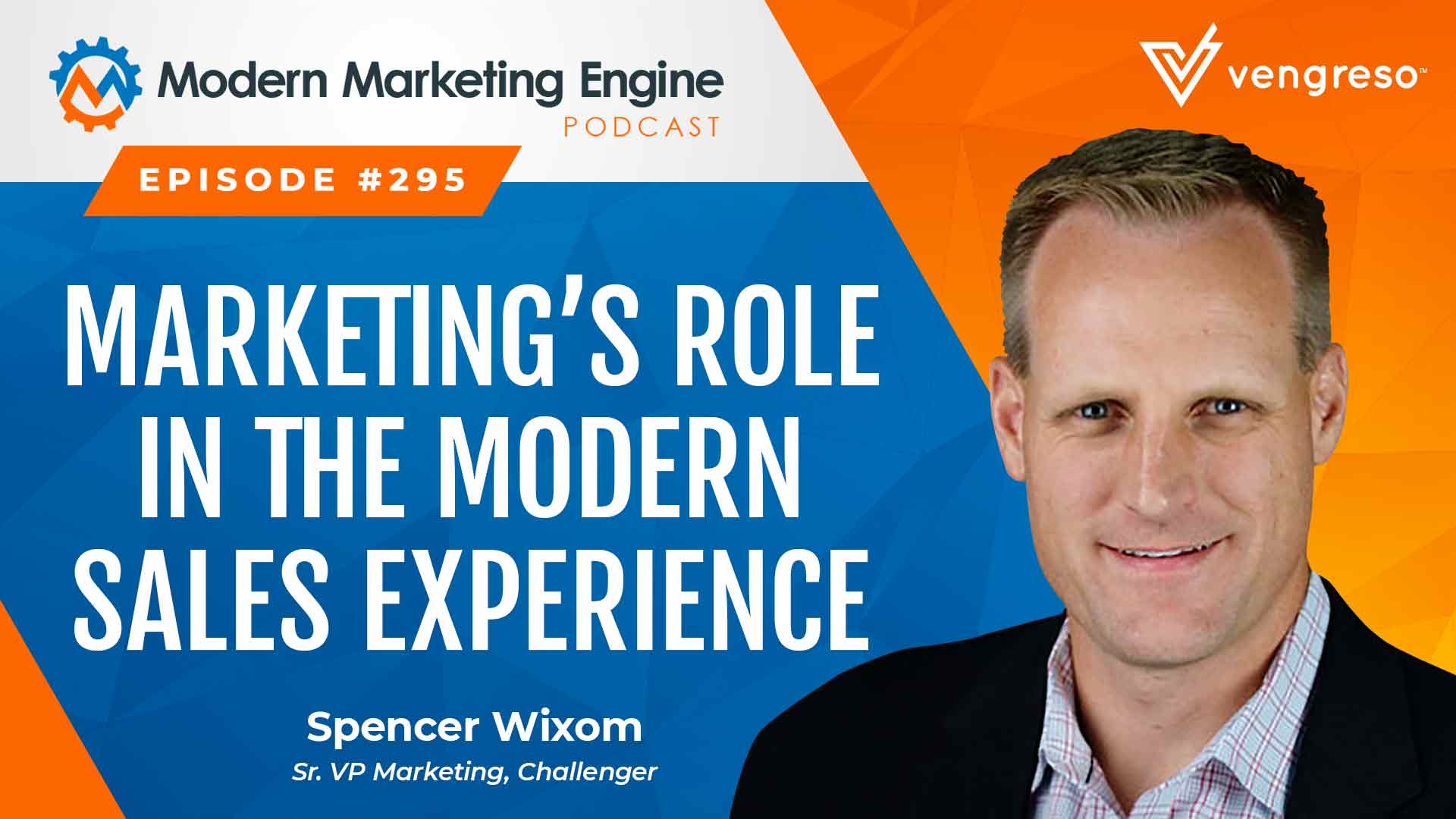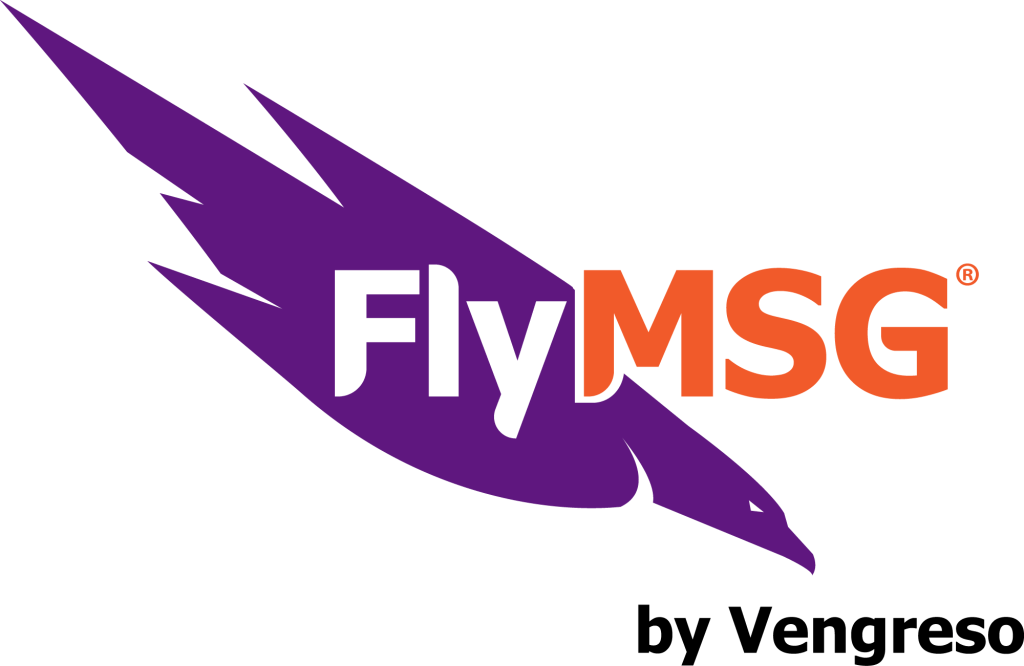Subscribe to Modern Marketing Engine on your app of choice!
B2B buyers have changed dramatically, especially during COVID. Consider these three recent trends, for example:
- B2B buyers are looking critically at any opportunity that comes to them, whether it comes from marketing content or from a sales conversation.
- B2B buyers are giving less access to salespeople and traditional conversations. In fact, 83% of the buyer journey does not include a sales rep.
- B2B buyers place a greater priority on perspective and recommendations from people who aren’t salespeople, from their peers, and from subject matter experts via content marketing.
So, as marketers, how do we approach the modern buyer? That is the topic of conversation in this episode of the Modern Marketing Engine with my guest, Spencer Wixom , Sr. VP Marketing at Challenger .
Listen as Spencer unpacks marketing’s role in the modern sales experience.
Great ep. of the @MMEnginePodcast w/ Spencer Wixom, Sr. VP Marketing at @_challengerinc and host @BernieBorges I learned how to approach the new B2B buyer as a marketer. Share on XThe 3 Pillars of the Modern Sales Experience
1. Role of messaging to the buyer
“I think it’s really critical for B2B marketers to think about how we are interacting with today’s buyer,” Spencer says, “who is putting more scrutiny on their decisions, who’s giving less access to traditional channels for education and who is listening to so many other sources.”
Spencer believes that B2B marketing professionals should use the three-act structure of classic playwriting to engage with buyers.
Act one is about introducing and building the understanding of the various characters, and introducing the problem those characters are going to face.
“In act one of the messages we create, we need to establish our credibility, why we have a perspective or a point of view about that customer’s business and we need to introduce a problem in their business that we’re going to have a perspective or point of view on.”
Act two is the journey or the struggle. In act two of the marketing message, we have to introduce the status quo or the current actions that the customer is taking.
“Those actions are costing them something in rational and emotional ways, and we need to explore that to build some motivation.”
And act three is the solution. We must suggest the next steps they need to take and connect that to our differentiators or our solution.
So, what is marketing’s role in developing this narrative?
Spencer says marketing should not create this message by itself. “It really is a cross-functional group that needs to come together to develop that narrative and we’d recommend marketing play a key role in that. But you also need to get the feedback of salespeople who will ultimately be delivering that narrative as part of a conversation. You need to make sure that product is involved in representing the end part of that narrative where you do talk about the solution.”
B2B marketers can use the three-act structure of classic playwriting to engage with buyers (message, journey, and solution). Thanks, @MMEnginePodcast for this ep. w/ Spencer Wixom from @_challengerinc and host @BernieBorges Share on XThink about the story you want to tell to the market and then “atomize” it. That means telling the story in bite-size content throughout your website, social media posts, sales conversations, pitch books, and other channels.
Listen to the whole episode to learn the three types of content you must use: Spark, Introduce, and Confront.
2. Foundational skills for sales to deliver the message
Research reveals that buyers are not satisfied with the experience that sellers create in the remote selling environment.
Spencer says that it is on the shoulders of salespeople to improve that experience in the virtual selling environment, to get better at presenting information, listening, using silence to build constructive tension more effectively, and having more engaging virtual experiences with customers.
However, marketing must look at the narrative and give sellers compelling content to bring to the conversation.
In essence, sellers need to:
- Address the unique perspective they have of the customer’s business
- Express what that perspective means to their business
And marketers can help with more confront tools, with bite-sized content for natural conversation and making it easy for sellers to create conversation.
“If you can build a confront tool that can get that buyer or that buying group to really evaluate themselves and capture that data and you put that in the hands of your salespeople, then they’re not having to do that confront exercise on their own. They can take the output of that exercise and have a powerful conversation with the buyer around that output.”
Don’t miss this episode to learn more about creating great sales messaging for sellers.
3. Arming sellers with the right content for the right time
Buyers trust others in their network more than sellers. In fact, only 12% of buyers rank sellers as top trusted resources. That’s why modern sales must be done through advocates of mobilizers.
Marketers have to build content not only for their sellers to use, but that B2B customers can understand and then use within their organizations to build consensus.
WOW, I just listened to this @MMEnginePodcast ep. and learned the three types of content a B2B marketer must use: Spark, Introduce, and Confront. Thanks, Spencer Wixom from @_challengerinc and host @BernieBorges Share on X“It has to be clear,” Spencer says. “It has to be defensible. So when they get those questions and objections, they can easily handle those because they have the resources and the information they need to be able to defend the narrative, the concept, the insight that you’ve presented to them.”
Sellers need to identify those individuals and pass that content to them at the right moments so they can use it in consensus-building.
Sales enablement tools will help teams to know what information and when it should be used to interact with customers.
Listen to our conversation to learn how to measure the efficacy of your marketing content in sales conversations.
Podcast Resources:
- Text Expander: 1 Billion Reasons & The Benefits of Using It In 2024
- Boost Your Productivity with Essential Keyboard Shortcuts
- Maximize Your Productivity with Canned Responses in Gmail
- Automate Data Entry Tasks for Maximum Efficiency
- Text Expansion Tool Mastery: A Guide to Efficiency
- Efficiency 101: Mastering How to Use a Text Expander
- Supercharge Your Browsing with These Top 8 Browser Automation Tools
- Optimize Success with Meeting Request Email Templates
- Are You Really Maximizing Efficiency with Text Replacement on a Mac?
- Auto Reply Message Examples for Effective Communication




